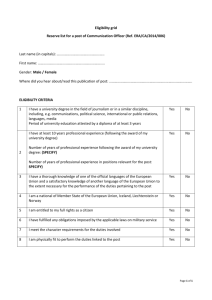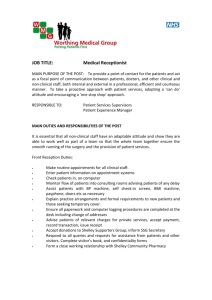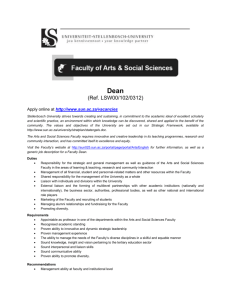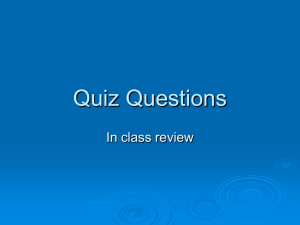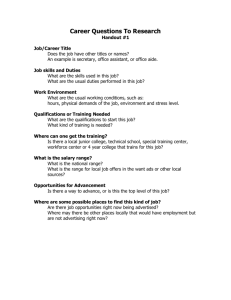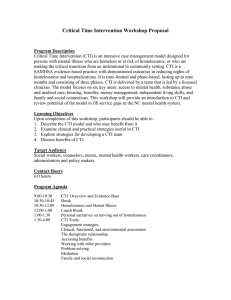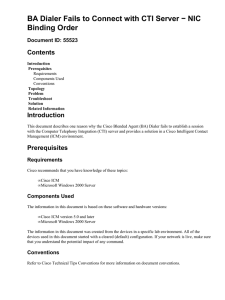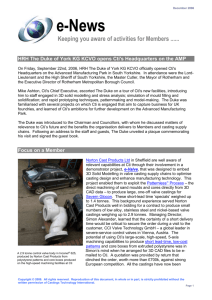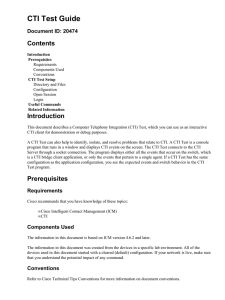Interpreter – Sample A (2014)
advertisement
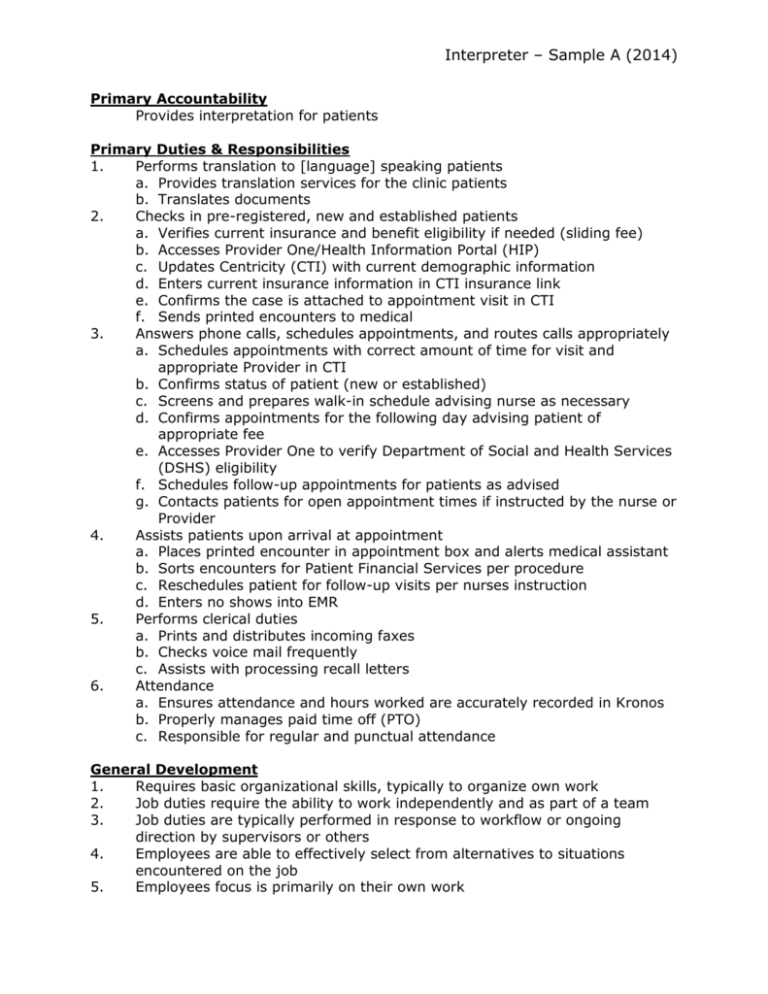
Interpreter – Sample A (2014) Primary Accountability Provides interpretation for patients Primary Duties & Responsibilities 1. Performs translation to [language] speaking patients a. Provides translation services for the clinic patients b. Translates documents 2. Checks in pre-registered, new and established patients a. Verifies current insurance and benefit eligibility if needed (sliding fee) b. Accesses Provider One/Health Information Portal (HIP) c. Updates Centricity (CTI) with current demographic information d. Enters current insurance information in CTI insurance link e. Confirms the case is attached to appointment visit in CTI f. Sends printed encounters to medical 3. Answers phone calls, schedules appointments, and routes calls appropriately a. Schedules appointments with correct amount of time for visit and appropriate Provider in CTI b. Confirms status of patient (new or established) c. Screens and prepares walk-in schedule advising nurse as necessary d. Confirms appointments for the following day advising patient of appropriate fee e. Accesses Provider One to verify Department of Social and Health Services (DSHS) eligibility f. Schedules follow-up appointments for patients as advised g. Contacts patients for open appointment times if instructed by the nurse or Provider 4. Assists patients upon arrival at appointment a. Places printed encounter in appointment box and alerts medical assistant b. Sorts encounters for Patient Financial Services per procedure c. Reschedules patient for follow-up visits per nurses instruction d. Enters no shows into EMR 5. Performs clerical duties a. Prints and distributes incoming faxes b. Checks voice mail frequently c. Assists with processing recall letters 6. Attendance a. Ensures attendance and hours worked are accurately recorded in Kronos b. Properly manages paid time off (PTO) c. Responsible for regular and punctual attendance General Development 1. Requires basic organizational skills, typically to organize own work 2. Job duties require the ability to work independently and as part of a team 3. Job duties are typically performed in response to workflow or ongoing direction by supervisors or others 4. Employees are able to effectively select from alternatives to situations encountered on the job 5. Employees focus is primarily on their own work Interpreter – Sample A (2014) 6. Duties require the compilation of information Professional & Technical Knowledge Possesses a basic level of written and verbal communications skills, computational and computer skills and mathematical knowledge typically acquired through completion of a high school program Technical Skills 1. Ability to prepare basic correspondence and simple reports in Microsoft Word 2. Ability to create, send and manage email in Outlook 3. Fully functional in use of the Centricity (CTI) program Communication Skills 1. Job duties require the employee to effectively communicate complex and/or technical information to co-workers and others 2. Employees are expected to exercise tact and diplomacy in the resolution of mild conflicts or disagreements 3. Duties require the compilation of information 4. Duties require employees to effectively convey technical information to nontechnical audiences 5. Ability to read, write and speak [language] Work Environment Work is performed in an office environment Blood/Fluid Exposure Risk Category I: Tasks routinely involve a potential for mucous membrane or skin contact exposure to blood, fluids or tissue. Use of personal protective equipment (PPE), when appropriate, is required. Category II: Usual Tasks do not involve exposure to blood, body fluid, or tissues but may require performing Unplanned Category 1 tasks. Category III: Tasks involve no greater exposure to blood, body fluids or tissues than would be encountered by a visit. Category 1 task are not a condition of employment. Typical Physical Demands Sitting for long periods of time Occasional lifting up to 20 pounds Frequent bending, walking, reaching and kneeling Good eyesight and vision for close work/computer screens Ability to communicate in person and on the phone Frequent use of the keyboard requiring manual dexterity Frequent writing requiring manual dexterity
